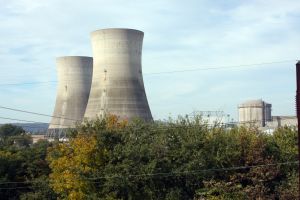
Like everyone else, I’ve been closely watching the events in Japan over the last week. The tragedies arising from the earthquake and the resulting tsunami are powerful enough to defy easy attempts at explanation. Still, that hasn’t stopped us from trying, and a tension has emerged between those who see in the disaster hubris on the one hand, tenacity on the other.
Events like this, says the first camp, are reminders that we humans, like the rest of the life on this planet, are at the mercy of forces greater than ourselves. We can put men on the moon, but we can’t save ourselves from nature’s fury. By contrast, the second camp, while acknowledging the terrible reality of the disaster, is encouraged by the fact that human ingenuity has, if not averted it, at least drastically reduced its scale. The Sendai earthquake was a thousand times more powerful than that which hit Haiti just over a year ago. However, due to strict building codes, sophisticated warning systems, and prudent emergency planning, the death toll, while still significant, is over a hundred times lower. We cannot conquer nature, but at our best we can strongly curtail its destructive power.
This same tension is present when it comes to the always controversial topic of nuclear energy, which is another thread in this same tale. Much attention has been focused on the problems at the Fukushima Daiichi nuclear reactor, about 250 km north of Tokyo. As with all of Japan’s 55 nuclear plants, Fukushima Daiichi is equipped with emergency systems that stopped the reaction once the earthquake was detected. The problem is that stopping a nuclear chain reaction isn’t like turning off a light switch; it’s more like turning off an electric stovetop element. Though the power is cut off at the source, there is lots of dangerous residual heat that must be dissipated. In the case of a reactor, this heat can last for days as the unstable products of uranium fission continue to decay. All nuclear stations have emergency cooling systems to deal with this, but at Fukushima Daiichi, it seems that these were damaged by the tsunami and failed to come online. Thus began what many media sources have characterized as a “race against time” to cool the reactors before . . . . before . . . .
At this point in the story, many articles I’ve read employ a word that is as misleading as it is terrifying: meltdown. The reasons why this word is so troublesome are articulately pointed out in this article, but briefly; as counterintuitive as it sounds, there are many degrees of meltdown, and not all of them result in a Chernobyl-style disaster. Moreover (and again, unlike Chernobyl) Fukushima Daiichi is equipped with multiple containment systems that can allow (if it comes to that) for the fuel rods to melt or partially melt without releasing any harmful substances to the atmosphere. In short, a meltdown is not inevitable, and is becoming less likely with each passing day, but even if one does happen, it is entirely possible for it to take place safely, as was the case at Three Mile Island in 1979. Likewise, while the explosions and radioactive venting which have happened are certainly bad news, not all radiation is equally deadly, and not all explosions are equally damaging.
It is beyond the scope of this post (and my own expertise) to get into the details of how a nuclear plant works and what exactly has taken place at Fukushima Daiichi over the last few days; that has been expertly done by others, which I encourage you to read here, here, here, and especially here. Once you’ve done that, take a second look at the coverage of this topic from any media outlet of your choice, or the comments made by the numerous opponents of nuclear energy. Ask yourself if their incendiary rhetoric matches the actual facts of the case.
I’m not saying that everything is fine at Fukushima Daiichi; it is indisputable that there has been a disaster, that people have been injured, and that there is a risk to the public, which the Japanese authorities are rightly taking precautions against. Emergency systems did fail, and it may yet be ruled that the operator was not up to the high standards that the rest of the industry holds itself to. Whatever happens, it’s clear that plant is already beyond repair, and to cost of replacing it will undoubtedly be high.
But the narrative which states that this example proves nuclear power is inherently too powerful for mere mortals to handle is, in my opinion, not completely convincing. The world has learned from the mistakes at Chernobyl, and that knowledge has prevented a disaster of the same magnitude from repeating itself, even in the face of one of the worst natural catastrophes in history. We humans are not perfect, but we’re dealing successfully with bigger challenges than we ever have before. I think that’s a story worth telling.
No comment yet, add your voice below!